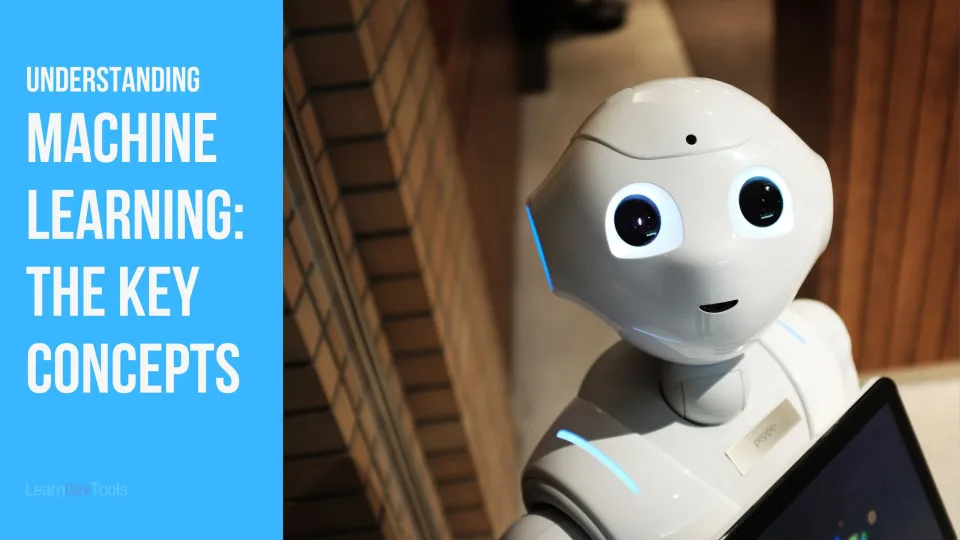Machine learning is a subset of artificial intelligence that focuses on enabling machines to learn from data and improve their performance over time. It’s a powerful tool that can be used in a variety of applications, from predicting customer behavior to diagnosing medical conditions. But if you’re new to the world of machine learning, it can be overwhelming to know where to start. In this article, we’ll break down the basics of ML, including key concepts, common algorithms, and best practices for getting started. Whether you’re a student, a developer, or a business owner, this guide will give you the tools and knowledge you need to start exploring the exciting world of ML. So, let’s get started!
Understanding the basics of Machine Learning
Before diving into machine learning(ML) algorithms, it’s important to understand the basic concepts that underpin the field. At its core, ML is all about using data to make predictions or decisions. This is done by training models on historical data and then using those models to make predictions on new data. There are three main types of machine learning: supervised learning, unsupervised learning, and reinforcement learning.
Supervised learning involves training a model on labeled data, where the correct output is provided for each input. This type of ML is used for tasks like classification and regression, where the goal is to predict a categorical or continuous output variable based on input features.
Unsupervised learning, on the other hand, involves training a model on unlabeled data, where the goal is to identify patterns or structures in the data. This type of machine learning is used for tasks like clustering and anomaly detection.
Reinforcement learning involves training a model to make decisions based on rewards or penalties and is commonly applied in robotics and game playing.
Advantages of Machine Learning
There are many advantages to using machine learning in your business or research.
- One of the biggest advantages is the ability to automate complex decision-making processes. With ML, you can train models to make decisions based on patterns in the data, which can be much faster and more accurate than humans.
- ML can also help you identify patterns that might not be immediately obvious to the human eye, allowing you to make more informed decisions.
- Finally, machine learning can help you predict future outcomes based on historical data, which can be invaluable in industries like finance and healthcare.
Machine learning(ML) Algorithms for Beginners
There are many different machine learning algorithms to choose from, each with its own strengths and weaknesses. Some of the most common algorithms include
- Linear regression
- Logistic regression
- Decision trees
- Random forests
- Neural networks.
Linear regression is a simple algorithm that can be used for tasks like predicting housing prices based on features like square footage and number of bedrooms.
Logistic regression is similar to linear regression but is used for classification tasks where the output is a binary variable like yes or no.
Decision trees and random forests are used for tasks like classification and regression and are particularly useful for identifying important features in the data.
Finally, neural networks are a powerful type of algorithm that can be used for a wide range of tasks, including image recognition and natural language processing.
Data Preparation for Machine learning(ML)
One of the most important steps in any machine learning project is data preparation. This involves cleaning and formatting the data so that it can be used to train models effectively. Some common data preparation techniques include
- Missing value imputation,
- Feature scaling
- One-hot encoding.
Missing value imputation involves filling in missing values with reasonable estimates based on the other values in the data.
Feature scaling involves rescaling the features so that they have similar ranges, which can help some algorithms perform better.
One-hot encoding involves converting categorical variables into binary variables, which can be more easily used in some ML algorithms.
ML Tools and Platforms
There are many tools and platforms available for building machine learning models, ranging from open source libraries like Scikit-learn to commercial platforms like Amazon SageMaker. Some popular open source libraries include TensorFlow, Keras, and PyTorch. These libraries provide a wide range of tools for building and training neural networks, as well as other types of ML models. Commercial platforms like Amazon SageMaker provide a more user-friendly interface for building ML models, and also provide tools for deploying and managing those models in production.
Building your First ML model
Now that you understand the basics of machine learning, it’s time to start building your first model.
The first step is to choose a dataset and decide on a task. For example, you might choose a dataset of housing prices and decide to build a model that predicts the price of a house based on features like square footage and number of bedrooms.
Once you have your dataset and task, it’s time to choose an algorithm and train your model. This involves splitting the data into training and testing sets and then using the training set to train the model. Once the model is trained, you can evaluate its performance on the testing set and make any necessary adjustments.
Machine learning Best Practices
There are many best practices to keep in mind when building ML models.
- One important practice is to always start with a simple model and gradually increase complexity as needed. This can help you avoid overfitting, where the model performs well on the training data but poorly on new data.
- Another best practice is to always evaluate your model using cross-validation, which involves splitting the data into multiple folds and evaluating the model on each fold. This can help you get a more accurate estimate of the model’s performance.
- Finally, it’s important to always be mindful of bias and fairness when building machine learning models, as these issues can have serious real-world consequences.
Real-World Applications of Machine Learning(ML)
Machine learning is used in a wide variety of applications, from predicting customer behavior to diagnosing medical conditions. One common application is fraud detection, where ML can be used to identify patterns of fraudulent behavior in financial transactions.
Another common application is image recognition, where ML can be used to identify objects in images. Machine learning is also being used in healthcare to predict patient outcomes and identify high-risk patients.
Machine learning Resources for Beginners
There are many resources available for beginners who want to learn more about ML. Some popular online courses include Andrew Ng’s ML course on Coursera and the Google ML Crash Course. There are also many books available on the topic, including “Hands-On ML with Scikit-Learn and TensorFlow” by Aurelien Geron and “Python Machine Learning” by Sebastian Raschka. Finally, there are many online communities and forums where you can ask questions and get help from other ML enthusiasts.
Closing Up
Machine learning is a fascinating field that has the potential to transform many industries and applications. In this beginner’s guide, we’ve covered the basics of machine learning, including key concepts, common algorithms, and best practices for getting started. Whether you’re a student, a developer, or a business owner, this guide should give you the tools and knowledge you need to start exploring the exciting world of machine learning. Remember to start with simple models, be mindful of bias and fairness, and always keep learning!








